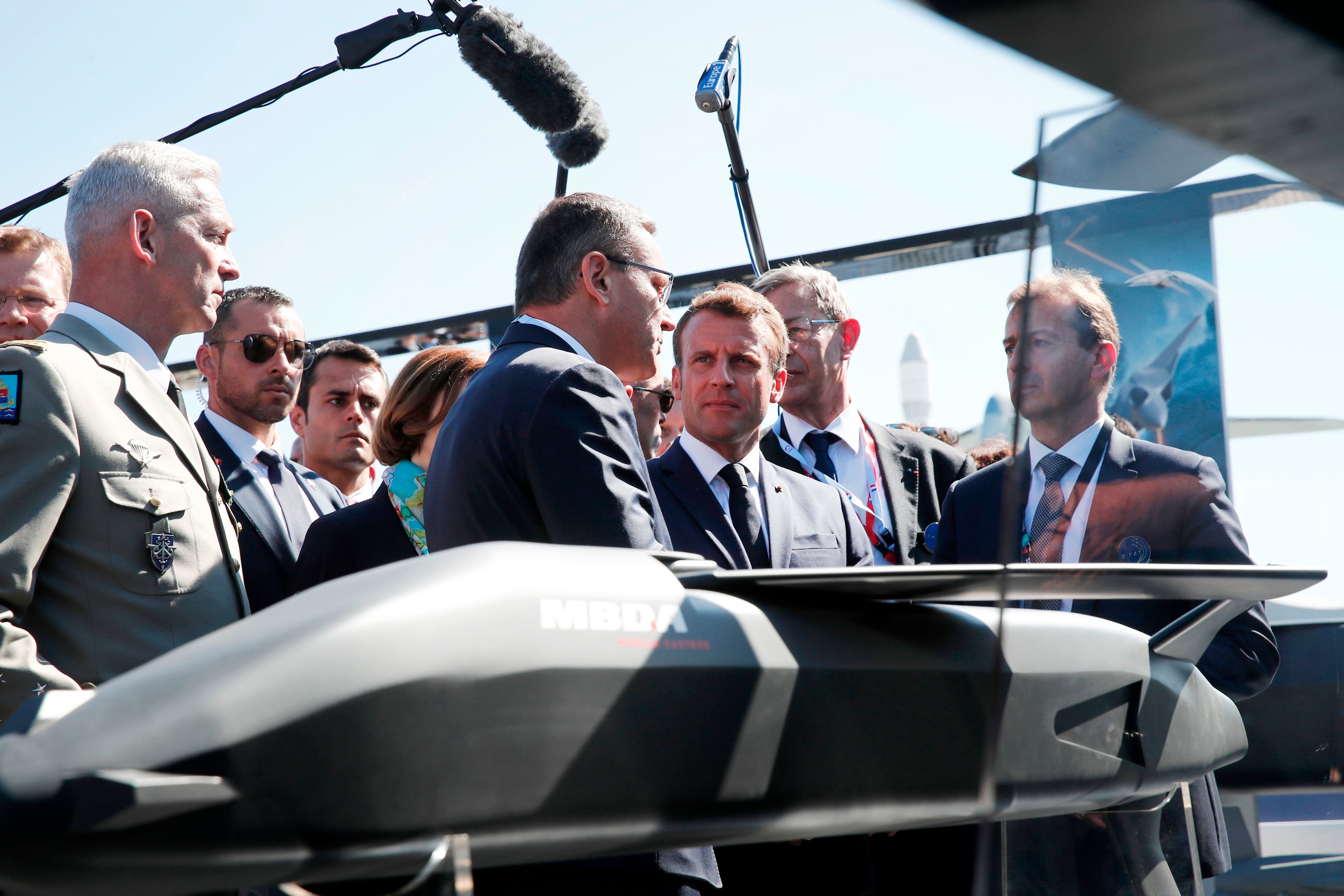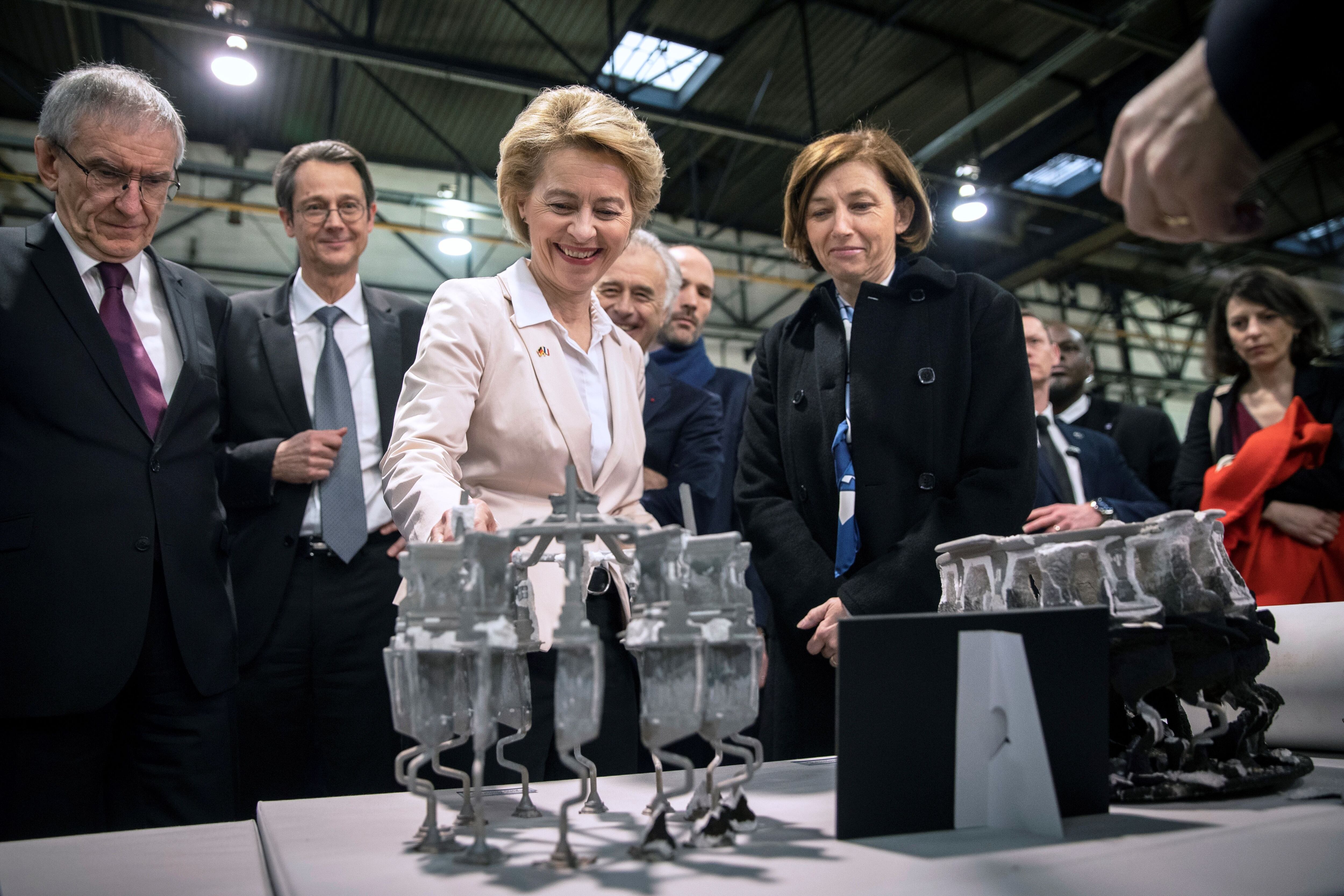PARIS — French President Emmanuel Macron and the defense ministers of Germany, France and Spain unveiled the mock-up of a sixth-generation combat aircraft at the Paris Air Show on Tuesday, moving forward with a project they hope will become Europe’s primary aerial weapon within about two decades.
The model, which stood in a uniformly dull gray against the blue sky at the Le Bourget airport north of the French capital, is meant to be the main aircraft of the Future Air Combat System suite of weapons. No features were included in the stylized structure other than the general shape of a military aircraft, seemingly larger and flatter in appearance than today’s comparable fighter planes.
That is likely because there isn’t much agreement about what an aerial weapon set to hit the skies in 2040 will look like.
With Macron looking on, German Defence Minister Ursula von der Leyen and her French counterpart, Florence Parly, signed a so-called framework arrangement governing key rules for the cooperative project, as well as an implementing arrangement for the initial study phase.
Spanish Defence Minister Margarita Robles then joined in a second round of signatures for an updated text of the framework arrangement that formalizes Madrid’s participation.
Joining the ceremony were Eric Trappier and Dirk Hoke, the heads of Dassault Aviation and Airbus Defence and Space, respectively. The industry duo forms the core of what is expected to be a growing list of suppliers in Germany and France. Spanish companies, too, will get some of the work now that Madrid is fully part of the program, but those details remain to be sorted out.
RELATED

Von der Leyen called FCAS a “big step forward for modernizing the Bundeswehr,” the German armed forces. “It's also a great day for the European defense union,” she added. “For the first time we initiate a European combat air system. The fact that Spain is joining us today emphasizes this goal.”
The Dassault and Airbus D&S chiefs signed an agreement to offer the participating governments work on a next-program stage, aimed at producing a flyable demonstrator in 2026.
That means spending far larger sums than the tens of millions of dollars that have been in play so far. Hoke told reporters that Germany would have to pony up “several billions” of euros next year to go from studying the program to actually developing something.
To prepare lawmakers in the Bundestag for the significant investment, Airbus officials have swarmed out in recent weeks to explain what is at stake, Hoke said.
One of the hurdles for the company is assuaging parliamentarians that German industry will get a fair share of the work compared with their French counterparts. Some lawmakers fear that Dassault having the full weight of the Paris government behind it, and Airbus being a Franco-German-Spanish hybrid company, could lead to an unequal distribution as the program progresses.
RELATED

A request by Reinhard Brandl, a member of Bavaria’s Christian Social Union in the Bundestag, for Airbus to reveal its internal national distribution of employees was initially met with resistance from the company. Brandl earlier this month even made a report on the issue a prerequisite for the FCAS program advancing in Paris. But the lawmaker ended up posing next to von der Leyen in a group photo at the Paris Air Show on Tuesday, suggesting that his concerns were put to rest for the moment.
Asked about Germany’s fears of an uneven workshare arrangement, Trappier said there would be a division of labor “roughly” reflecting the investments made by each of the partner governments.
Besides, he quipped, Germany's parliament worrying about industry equities in the FCAS development program is still better than Berlin getting only a minimal say had the government picked the F-35 to replace its Tornado fighters.
The German Defence Ministry announced earlier this year that the Lockheed Martin-built aircraft is no longer in the competition, leaving only the Eurofighter and the F-18 Super Hornet as contenders.
Sebastian Sprenger is associate editor for Europe at Defense News, reporting on the state of the defense market in the region, and on U.S.-Europe cooperation and multi-national investments in defense and global security. Previously he served as managing editor for Defense News. He is based in Cologne, Germany.






